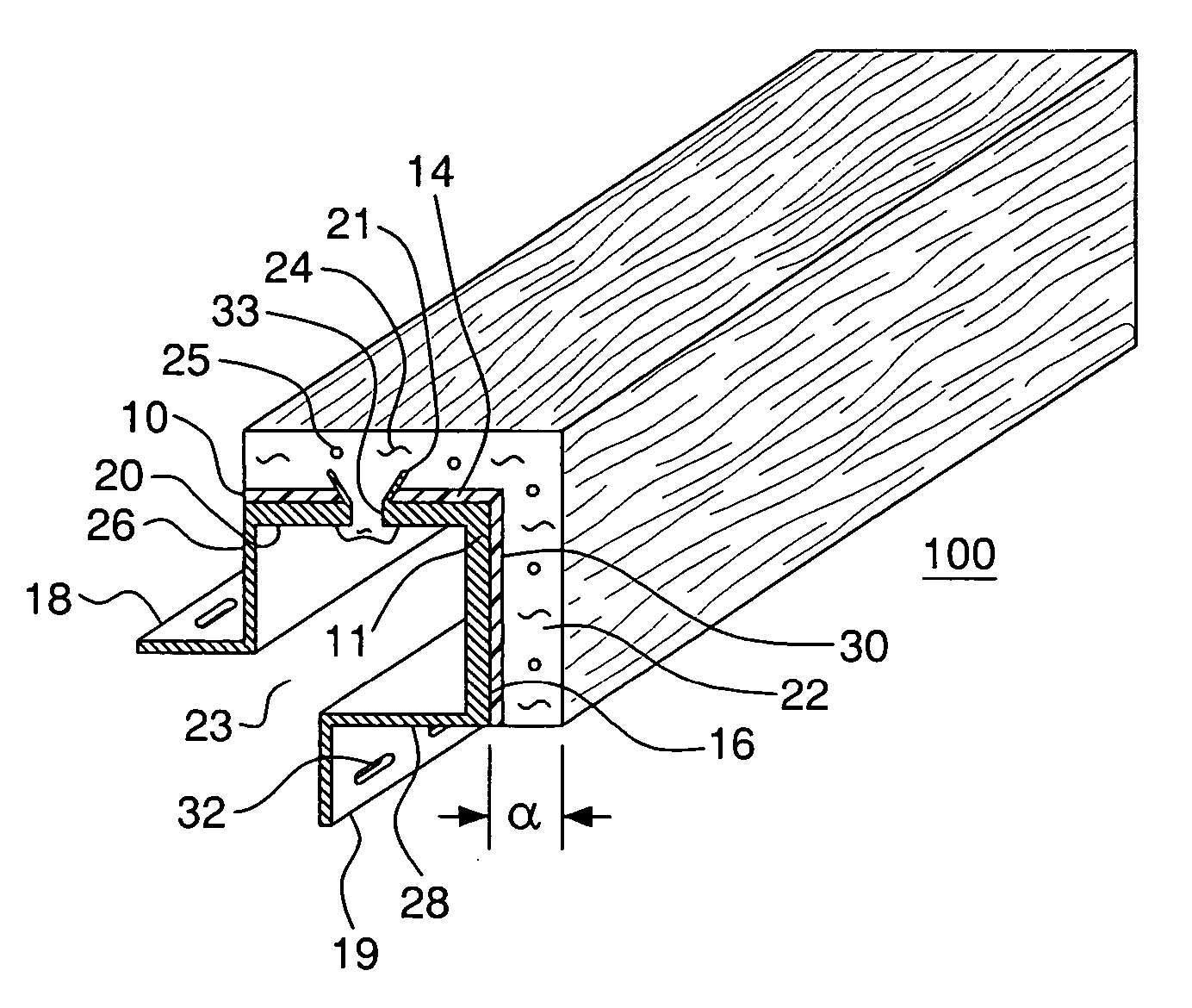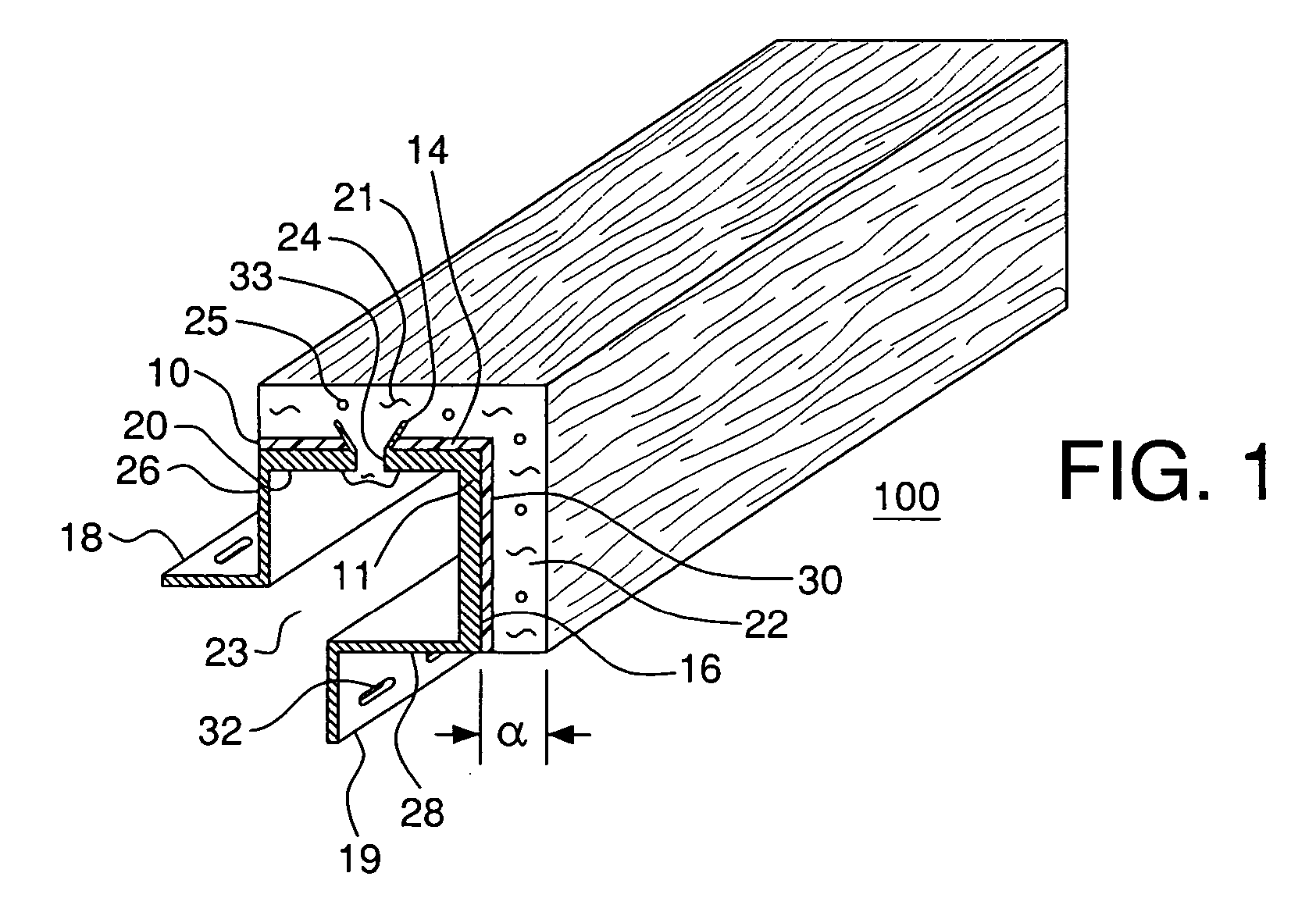Cementitious exterior sheathing product with rigid support member
a technology of rigid support and exterior sheathing, which is applied in the direction of water-setting substance layered products, solid waste management, flooring, etc., can solve the problems of fiber cement building products that are believed to be unsuitable for exterior use, severe deterioration of fiber cement building products, cracking, etc., and achieve the effect of convenient portability
- Summary
- Abstract
- Description
- Claims
- Application Information
AI Technical Summary
Benefits of technology
Problems solved by technology
Method used
Image
Examples
Embodiment Construction
[0020] Cementitious exterior sheathing products, such as lap siding, shingles, panels, planks, vertical siding, soffit panels, fascia, corner post, column corners and trim boards, are provided by this invention. As used herein, “cementitious” refers to hydraulically settable materials, including a hydraulically settable binder, such as hydraulic cement, gypsum hemihydrate, and calcium oxide, and water to which components such as aggregates, fibers, dispersants and a rheology-modifying agents can be selectively added to modify the properties of the mixture. The term “fiber cement” refers to a cementitious composition including portland cement, cellulose fibers and sand.
[0021] With reference to the figures, and particularly FIGS. 1-3 thereof, a process for making cementitious exterior sheathing products, such as a corner trim board 100, is disclosed. In a first embodiment of this invention, shown in FIG. 1, a corner trim board 100, is provided. The corner trim board 100 includes an e...
PUM
| Property | Measurement | Unit |
|---|---|---|
| pressures | aaaaa | aaaaa |
| thickness | aaaaa | aaaaa |
| thickness | aaaaa | aaaaa |
Abstract
Description
Claims
Application Information
 Login to View More
Login to View More - R&D
- Intellectual Property
- Life Sciences
- Materials
- Tech Scout
- Unparalleled Data Quality
- Higher Quality Content
- 60% Fewer Hallucinations
Browse by: Latest US Patents, China's latest patents, Technical Efficacy Thesaurus, Application Domain, Technology Topic, Popular Technical Reports.
© 2025 PatSnap. All rights reserved.Legal|Privacy policy|Modern Slavery Act Transparency Statement|Sitemap|About US| Contact US: help@patsnap.com



